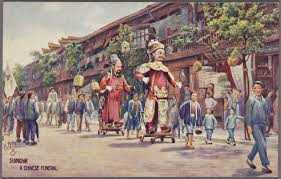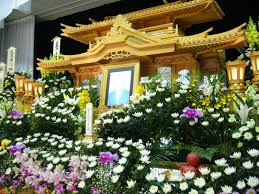“Even death is not to be feared by the one who has lived wisely.” Those words were spoken by Buddha himself and remain prevalent to his followers today.
The Buddhist philosophy of death is that every essence, or soul, is reborn into the world of samsara, or perpetual wandering, until it is fully cleansed. The cleansing is achieved only by reaching Nirvana, which is the primary aim of the Buddhist faith. The western world has come to think of Nirvana as a sort of Heaven on earth when, in reality, the actual definition of Nirvana is taken directly from what Buddha described: the final beatitude that transcends suffering, karma, and samsara through the extinction of desire and individual consciousness.
Upon one’s rebirth, Buddhists believe that you re-enter the world in one of six realms, often depicted by the Bhava Chakra, or Wheel of Life. These are: Deva-gati, the Realm of the Devas (Gods) and Heavenly Beings; Asura-gati, the Realm of Asura, or Titans; Preta-gati, the Realm of Hungry Ghosts; Naraka-grati, the Hell Realm; Tiryagyoni-gati, the Animal Realm; and Manusya-gati, the Human Realm. Placement is based on karma, or the cause and effect of past actions. While some realms seem more preferable than others, they are all thought to be temporary.
Buddhists are taught their entire lives to prepare for their own demise.
By having no regrets and leading a life of compassion, they are able to surrender to the inevitable. The presence of a monk or nun is often requested to assist in this process. Prayers, chants and verses of Scriptures are recited to to allow them to enter a state of peace. Buddhists believe that the final moment of consciousness is the most important moment of all. If the dying is in the proper state of mind, they may enter a higher state of rebirth. The loved ones that are present for the dying process are instructed to remain silent and show no signs of emotion. This helps the mind let go to all ties with its current life and be open and clear.
The body of the deceased should not be touched or three to eight hours after the final breath. During this time the monks continue chanting. Often they are brought food and other offerings by friends and relatives who think the goodwill of these gifts will help the spirit pass on.
Intermediate State
This period is called the “Intermediate State” or First Bardo, and it is believed that the person does not know that they are dead. Instead, they are said to enter a trance that lasts from a single moment up to seven days while their new birthplace is found. During this time, the “Small Death” occurs. It is described as a feeling of waking from a deep sleep or coming out of a dream. The mental habits while alive play a large part here. Those well-trained in meditation may experience bliss and peacefulness while others could experience a terrifying nightmare.
Soon the person becomes aware that death has occurred, and at this point the Second Bardo begins. They will now see all the things they have done throughout their life pass before them. This could be compared to what is known as an out-of-body experience. The dead has left the body but does not yet realize it. Next is the Third Bardo, when the search for rebirth begins. Based on karmic forces, new parents are chosen.
Before the body is placed in the coffin, a bathing ceremony takes place where all relatives and friends present pour water over one hand of the deceased. Once in the coffin, they are covered with wreaths, candles and incense, with a photo placed nearby surrounded by colored lights.
The Eldest Son’s Responsibility
Upon death, the eldest son becomes head of the family, yet it is the responsibility of the daughters to bear the funeral expenses. Traditionally, the funeral rites last for 49 days, with prayer ceremonies held every seven days; however, if the family is considered poor, that period will be shortened to seven days, with prayer each day. However, the cremation of the body generally takes place on the third day after death, with the exception of the prominent or wealthy, who may be kept in a tomb for up to a year.
The day of the funeral is to be looked at as joyful, with music played to banish fears and sorrow. The procession begins at the home of the deceased, where the coffin is carried by the monks, who continue to chant. Banana leaves may be placed on the ground, to be walked on as a good omen. Flowers are carried in silver bowls by a group of eight to ten monks walking ahead, led by a man carrying a white banner. At the cemetery, the coffin is placed on bricks while the chanting continues and the loved ones light candles and incense that are placed beneath the body, and the cremation takes place followed by a large feast with games and cards. Relatives may return later to collect the ashes.
Sky burials in Tibet
In Tibet, sky burials are known to take place instead of cremation due to the fact that the ground is too hard for holes to be dug and timber is scarce The body will be taken to a hilltop or mountain and left to be naturally decomposed. Also, in some rare instances, the corpse will be dismembered and given to vultures, where it is considered bad luck if the birds leave even a small amount of meat on the bones.
Followers of Buddha believe in his words and are comforted that the end of one’s life is not to be feared, that everything is temporary and the goal of life is to reach Nirvana and obtain cleansing. “Everything is changeable, everything appears and disappears; there is no blissful peace until one passes beyond the agony of life and death.” – Buddha






